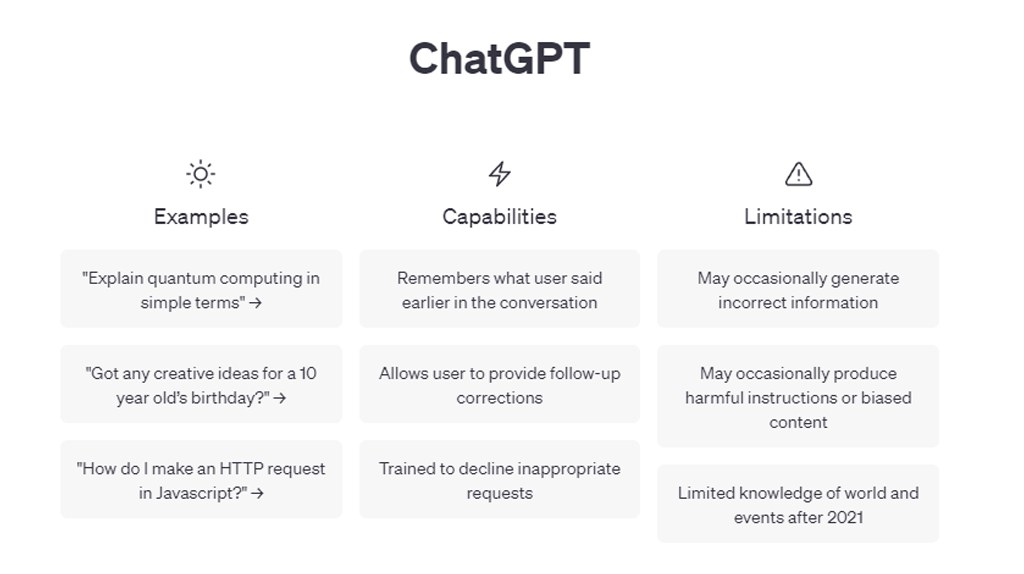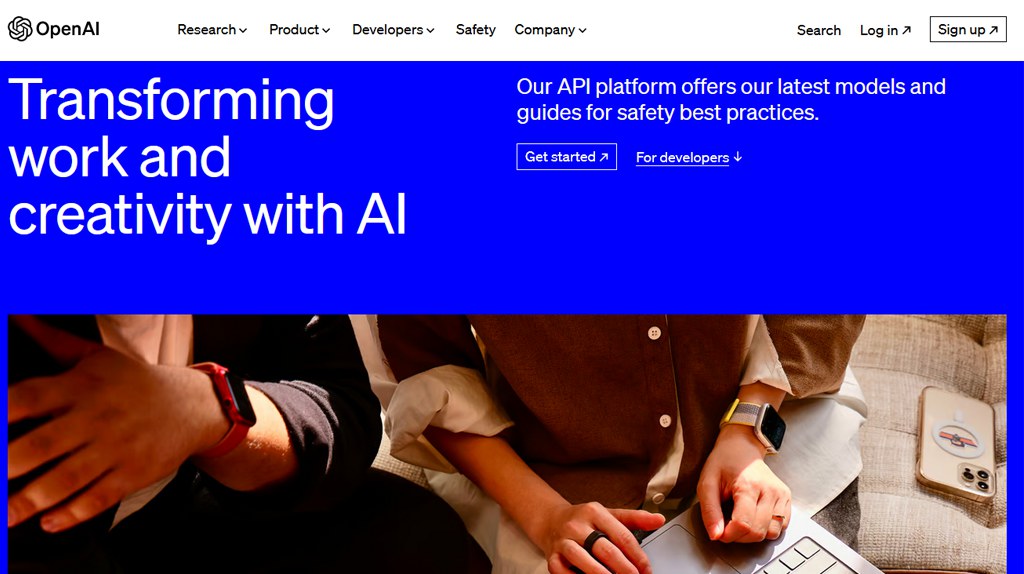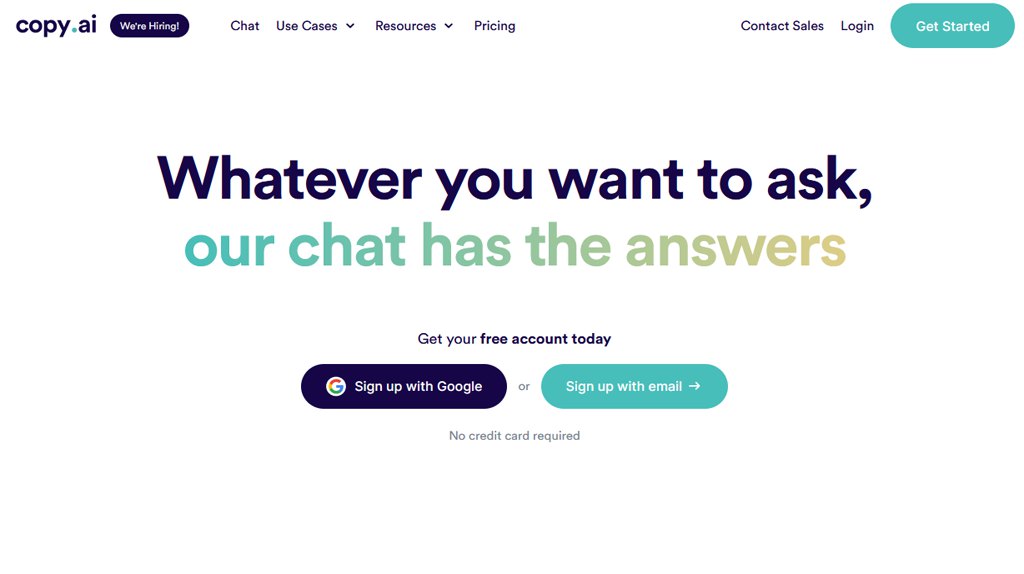Imagine spending endless hours meticulously crafting an exquisite piece of writing, only to witness a machine performing the same task in mere seconds – and doing it just as well, if not better. In an era where our world is being transformed by artificial intelligence, GPT-3 shatters the confines of conventional language modeling, leaving the editors, authors, and content creators astonished by its acute prowess in mimicking human creativity. Dive into the revolution that’s unfolding before our very eyes, as we explore the mastery of GPT-3 and how it’s rewriting the rules of writing itself.
GPT-3, or Generative Pre-trained Transformer 3, is an artificial intelligence tool that can generate human-like long-form text from a prompt. Its ability to create high-quality content at a rapid pace has the potential to change the writing industry in significant ways. GPT-3 can be used as a writing assistant to help with tasks such as generating ideas and streamlining the editing process. However, writers should be aware of potential biases and pitfalls associated with using AI-generated content and should continue to hone their craft as critical thinking and creativity are uniquely human qualities.
GPT-3: Unveiling the AI Writing Tool
The rise of artificial intelligence in recent times has seen groundbreaking applications across various sectors, and writing is not an exception. GPT-3, which stands for Generative Pre-trained Transformer 3, is an AI writing tool that has revolutionized written content creation. This revolutionary tool utilizes deep learning to generate human-like text with exceptional precision.
Imagine you have a deadline to submit a lengthy article, but you cannot come up with anything after staring at a blank screen for hours. You begin to panic as the deadline approaches, and you are running out of time. Such scenarios are relatable to most writers, but thanks to GPT-3, you don’t have to worry about wasted hours or missed deadlines anymore.
The application of GPT-3 in writing is fascinating and highly innovative. It uses natural language processing (NLP) and deep learning techniques to understand input prompts and generate outputs at a spectacular pace. The model contains over 175 billion parameters, making it one of the largest AI models available today. The massive size enables it to generate high-quality and coherent text with flawless grammar, structure, and even punctuation like a skilled writer.
While some may argue that allowing machines or algorithms to write takes away from the creative process, there is no denying that GPT-3 can write articles that meet professional standards. Furthermore, it offers incredible advantages such as reducing workload and enhancing productivity for businesses and individuals alike.
In simplistic terms, using GPT-3 is like having an intelligent and efficient virtual assistant that can deliver quality content with minimal supervision when given specific instructions.
Now that we have established what GPT-3 is let’s dive into how it works.
How GPT-3 Works: Key Concepts
GPT-3’s exceptional writing capabilities stem from the novel concepts it employs to generate text. The AI tool applies three significant principles in its operations: deep learning, language modeling, and generative architecture.
Here is how GPT-3 works. The AI model trains on massive datasets with billions of parameters, including Wikipedia pages, books, and other online content. It uses an unsupervised learning process that helps to understand patterns in language data without explicit supervision or labeling.
GPT-3 then applies a technique called language modeling, which involves predicting the probability distribution over a sequence of words. The application establishes word relationships based on their likelihood to occur together in a sentence. This process allows GPT-3 to predict and generate written content with coherence and structure.
However, some critics argue that this process leaves room for error and lacks critical thinking, which can lead to biased or false output. Furthermore, GPT-3’s integration relies heavily on large amounts of data due to its unsupervised learning processes. Without sufficient context, output generated by GPT-3 may not be appropriate for particular niches.
Think of GPT-3 as a “language machine” that has been taught various languages to help it understand how words interact with each other in sentences.
With the understanding of how GPT-3 operates let’s explore some of its applications in writing and content creation.
Applications in Writing and Content Creation
GPT-3 offers a wide range of applications, particularly in the field of writing and content creation. One practical application is helping writers generate fresh ideas or assist them in overcoming writer’s block, especially when working on long-form pieces such as novels and research papers. GPT-3 uses its vast database to provide unique insights by suggesting themes, plotlines, and character traits that would have been nearly impossible without the help of AI.
Another application of GPT-3 in writing is creating content summaries or outlines. For instance, one can input a book into GPT-3, and it will produce an outline summarizing each chapter’s main points. This feature makes it easier for writers to understand books’ subject matter, prepare reviews, or even help journalists write articles faster.
Moreover, GPT-3 can be used to generate SEO-friendly content with relevant keywords according to search intent. With this new AI tool, businesses can now optimize their online presence by having content that ranks high in search engine rankings. For example, product descriptions for e-commerce sites are usually challenging to create since they require targeting specific keywords. However, with GPT-3’s language generating algorithms and natural language processing (NLP), one can easily create perfect descriptions that help improve website traffic.
For instance, a copywriter working on a project for an online furniture store could input keywords such as “furniture,” “sofa,” “comfortable seats,” and “cheap,” among others. Once the keywords are entered into the system, GPT-3 generates multiple options as descriptions suitable for the customer’s needs. The tool analyzes various factors such as the information provided by customers, demographics data about their target audience; thus creating unique product descriptions every time.
Another writing application where GPT-3 shines is social media management. With social media platforms’ ever-growing popularity around the world, businesses need to maintain a strong online presence. By using GPT-3 to generate unique and relevant content on a steady schedule, businesses can keep their audiences engaged while maintaining a professional image.
Unlike traditional social media management tools, which tend to be rigid and lack flexibility, GPT-3’s language knowledge base ensures consistent quality across all platforms. It can even go as far as suggesting what calls to action should be used in each post for maximum engagement from the audience.
Moreover, this AI tool also has practical applications when it comes to writing e-mails that require specific tones or messages such as legal documents, sales letters, or even personalized notes. For instance, with GPT-3’s ability to generate high-quality text at an unprecedented pace; a company could automate thousands of emails customized by using personalized data like names and previous purchases with only minor inputs from the user.
To illustrate further: think of GPT-3 like a virtual writing assistant that helps you refine and streamline your writing process. With its vast knowledge base and intuitive software algorithms, it not only makes creating content more manageable but also more efficient.
These are just some examples of how GPT-3 is revolutionizing the way we create content. In the next section, we will discuss some of the advantages that come with using GPT-3 in writing.
Advantages of Using GPT-3 in Writing
One advantage of using GPT-3 is its ability to boost efficiency and productivity significantly. This AI tool allows writers to produce high-quality content at an exponential rate without sacrificing quality.
Instead of spending hours researching topics or themes for long-form pieces such as white papers or industry reports, writers can now use GTP-3’s research abilities to provide strong arguments and incorporate context-specific examples into their work. This, in turn, leads to significant time savings, enabling the writer to focus on other aspects of their job such as editing and revisions.
For example, imagine a writer tasked with creating a white paper on the impact of new technology trends in business. With GPT-3, she can input the topic, and within moments, receive relevant insights and resources required to produce a compelling piece of writing.
Another advantage of using GPT-3 is its ability to generate innovative and creative ideas that would have been impossible without the help of Artificial Intelligence.
As mentioned earlier, GPT-3 has access to tremendous data sizes compared to humans. GPT-3 leverages its vast database of information from books, articles, and other sources to uncover patterns and connections that may not be visible at first glance. This puts writers in a unique position to come up with cutting-edge ideas never-before-seen in their industries.
Think of GPT-3 like a professional brainstorming partner that provides useful suggestions whenever stuck in an idea rut.
Some critics argue that using AI could lead to the degradation of human creativity since it replaces our inherent creativity. However, the opposite is true as it enhances creativity since it enables writers can utilize machine-generated data to ideate upon novel concepts they may have never perceived otherwise.
- Using GPT-3 can significantly boost a writer’s efficiency and productivity while also enhancing their creativity. With access to a vast database of information, GPT-3 provides writers with relevant insights and resources required to produce compelling content without spending hours on research. Additionally, it generates innovative ideas beyond what would be possible without the tool’s assistance. Critics may argue that AI degrades human creativity, but this is not the case as it enables writers to ideate upon novel concepts they may have never perceived otherwise. Overall, GPT-3 offers a valuable resource for writers looking to streamline their writing process and produce high-quality content.
Boosting Efficiency and Productivity
GPT-3 is an advanced AI writing tool that revolutionizes the way professionals create content. One of its most significant advantages lies in boosting efficiency and productivity in writing tasks. With GPT-3, writers can produce more content in less time without sacrificing quality. Here are some of the ways this AI-powered tool helps boost efficiency and productivity.
For instance, imagine you’re a writer who needs to produce ten blog posts about different topics over the next two weeks. Without GPT-3, you’ll have to spend hours researching each topic, gathering information, and then writing each post from scratch. However, using GPT-3’s language model can dramatically speed up the writing process. With a single prompt or topic suggestion, GPT-3 generates high-quality content in seconds and provides enough material for you to refine or edit quickly.
Furthermore, GPT-3’s ability to generate accurate and relevant information saves valuable time since writers no longer have to scour through multiple articles searching for the facts or figures they need. This cuts down on research time significantly and reduces errors that may arise due to outdated information or misleading sources. Thus, writers can focus more on fine-tuning their content, improving their output’s accuracy, consistency, and overall quality.
Critics of GPT-3 argue that relying too much on an AI-powered tool hinders writers’ ability to hone their craft. They worry that automation may reduce creativity by taking the spontaneity out of writing. While it’s true that AI automates part of the writing process, this doesn’t mean it eliminates a writer’s skill set completely. Instead, it merely streamlines tedious tasks such as fact-checking and spelling errors so writers can concentrate on what they do best – writing compelling stories with their unique voice.
To put it simply, GPT-3 is like having an expert researcher and assistant writer at your fingertips. It can save writers hours of time and effort by assisting in various tasks typically associated with producing quality content. With GPT-3 as their partner, writers can create more in less time without sacrificing quality or originality.
- GPT-3, developed by OpenAI, has a staggering 175 billion parameters, which contributes to its natural language processing abilities and allows it to create text that closely mimics human writing.
- In an experiment conducted by Ph.D. candidate Kevin Lacker, GPT-3 achieved a 50% valid response rate in correctly answering questions that required common-sense thinking.
- A study conducted by OpenAI revealed that when people were asked to spot AI-generated content from human-written content, they incorrectly identified GPT-3 generated articles as being written by humans about 88% of the time.
Generating Creative Ideas
In addition to improving efficiency and productivity, GPT-3‘s AI language model can also help generate more creative ideas. Unlike traditional writing software that offers only basic suggestions for keywords or phrases, GPT-3 provides a plethora of creative options based on the input keyword or topic suggestion. Here are some ways this tool can help boost creativity in writing.
For instance, imagine you’re a writer tasked with creating content for a new product launch. You may not have enough information to come up with original ideas that fit the brand’s aesthetics and target audience’s preferences. However, using GPT-3’s language model can provide unique and compelling ideas that align with your brand’s tone and voice. Its vast database pulls from multiple sources and applies advanced algorithms to ensure that the suggestions provided are relevant and engaging.
Moreover, GPT-3’s ability to use natural language processing (NLP) enables it to understand context better than other writing tools. This allows it to offer contextually accurate suggestions that match the semantic field required for the content topic at hand. With GPT-3, writers no longer have to struggle with writer’s block or force themselves to come up with cliche ideas. This not only saves time but fosters creativity by expanding the range of possibilities beyond one person’s imagination.
Critics of GPT-3 may argue that relying too much on an AI-powered writing tool hampers a writer’s ability to develop their own voice and style. While it’s true that GPT-3 can suggest phrases or sentences that may not align with a writer’s preferences, that doesn’t mean the program can replace individual creativity. Instead, it provides new ideas and perspectives that can inspire writers to innovate and expand their writing horizons.
To put it simply, GPT-3 is like having an experienced editor who can provide valuable suggestions on how to improve content based on multiple sources. It helps writers refine their creative potential by offering new and unique perspectives to draw inspiration from.
GPT-3’s Limitations and Concerns
GPT-3 is an impressive AI writing tool that has revolutionized the writing industry. However, it is not without limitations and concerns. One of the most significant concerns about GPT-3 is its potential to perpetuate biases and stereotypes.
For instance, a study by OpenAI showed that GPT-3 has a gender bias, with a “brilliance” bias against women. This means that when prompted with a question that implies intelligence or creativity, GPT-3 is more likely to generate male-focused words such as “genius” or “brilliant.” While this may seem like a subtle difference, it can have severe consequences in perpetuating harmful stereotypes.
In addition to gender bias, GPT-3 has also been shown to perpetuate racial biases. For example, in a study conducted by researchers at George Washington University, they found that GPT-3 generates crime-related language more often when prompted with Black names compared to White names. The researchers argue that this could lead to harmful outcomes, such as contributing to further discrimination against Black people in the justice system.
Some argue that these biases are not inherent in GPT-3 but rather are reflective of the biases present in society as a whole. They contend that since GPT-3 is trained on large datasets that mirror our societal biases; it will inevitably reflect those biases.
To illustrate this point, think of GPT-3 like a mirror reflecting our world back at us. A mirror does not create the images it reflects but simply shows us what we already see. Similarly, GPT-3 reflects the biases already present in our society and culture.
Nevertheless, despite this argument, it is crucial to acknowledge that GPT-3’s perpetuation of biases and stereotypes is a severe concern. As AI writing tools like GPT-3 become more prevalent, it is essential to address these issues and work towards ensuring that AI writing tools do not perpetuate or exacerbate existing biases.
Bias and Ethical Considerations
The biases present in GPT-3 raise significant ethical concerns about the use of AI in the writing industry. As AI grows more sophisticated and powerful, it is crucial to consider the ethical implications of its use.
One of the most pressing ethical concerns with GPT-3 is the potential for deepfakes. Deepfake technology uses AI to manipulate audio or video footage to create an entirely new image or sound that appears authentic. With GPT-3’s natural language processing capabilities, there is a possibility that it could be used to generate deepfake texts that appear genuine but are factually inaccurate.
This has already happened with other AI-generated content such as “deepfake news,” which has been used to spread false information. The ethical implications of this are enormous since false information can have real-world consequences, leading to political instability or even endangering lives.
Some argue that these concerns are overstated, and AI writing tools like GPT-3 can be utilized for creative purposes without necessarily posing a threat. They believe that with proper regulations and guidelines in place, AI writing tools can be used ethically and responsibly.
To illustrate this point, imagine a sharp knife. While it can be dangerous if misused, it can also be used beneficially when appropriately wielded by someone who knows how to use it. Similarly, GPT-3 and other AI writing tools can potentially have positive applications when used appropriately under strict regulation.
Nevertheless, the potential for misuse is still high with AI writing tools like GPT-3. As AI continues to progress, it is essential to address these ethical issues and potential risks in a proactive manner so that we can enjoy the benefits of the technology while minimizing the risks.
Future of Writing with GPT-3 and Beyond
As GPT-3 continues to revolutionize the writing industry, it’s exciting to imagine what the future holds. Here are some potential developments that we may see in the near future:
Improved Language Translation: With GPT-3’s ability to understand context and generate natural-sounding phrases in multiple languages, we may see significant improvements in language translation tools. This could allow for easier communication and collaboration between individuals from different cultures.
Better Content Personalization: As GPT-3 continues to learn about individual users’ preferences and interests, it can tailor its output to suit those needs better. This would lead to more personalized content creation and a better user experience.
Ethical Concerns: While there’s no doubt that GPT-3 technology is innovative, there are also concerns around ethics. One major problem is the possibility of misuse by organizations or individuals that could result in the spread of sensationalized or misleading information. There’s also the risk of deep fake videos or text generated by an AI bot being used to manipulate public opinion or disseminate false information.
Similar advancements have happened in other industries, like the automobile industry where digital assistants can handle tasks beyond personal assistance through advanced voice commands, navigation capabilities, and even managing car functionality. We can expect similar advancements in writing that enable GPT-3 to help writers produce high-quality outputs that they wouldn’t have thought possible before.
Ultimately, while there are certainly limitations and ethical considerations involved with AI-based writing tools such as GPT-3, their potential for advancement is staggering. With continuing developments in AI research and improvement of algorithms, it’s only a matter of time before these advancements change the way people write forever.
When it comes to using AI writing technology, it’s important to consider all the options available. However, as we’ve discussed, On-Page.ai and its various features offer significant advantages over other tools in the market, including GPT-3. On-Page.ai’s precision, accuracy, and reliability make it a valuable asset for anyone looking to take advantage of AI in the writing and content creation spaces.







